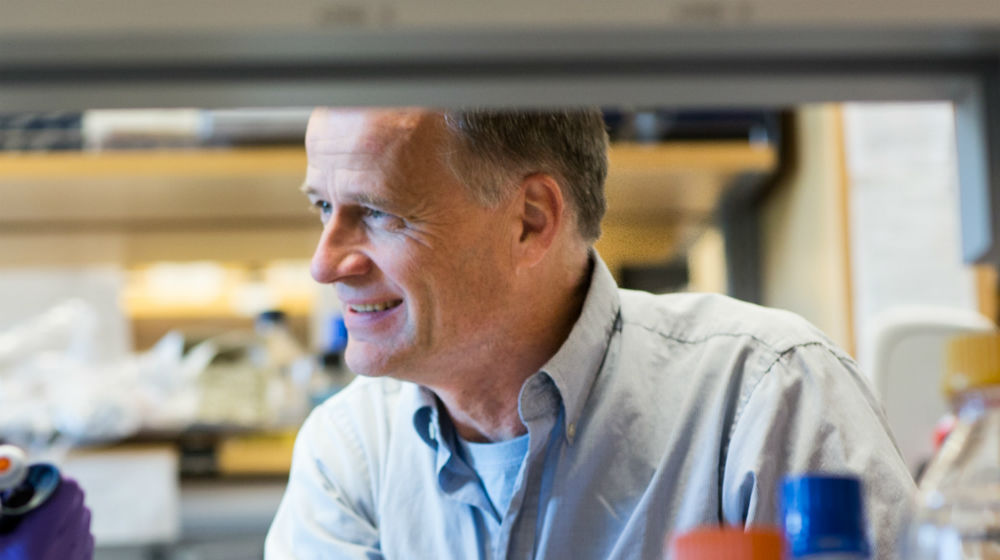
"I think we may be on the verge of understanding how drugs work at the level of the receptor itself...in a way that we can potentially rationally control or manipulate these drug effects." Mark von Zastrow, MD, PhD
The development of effective drugs to treat pain launched the modern pharmaceutical era. Opioid analgesics are in a category of drugs containing morphine and codeine that has enabled surgery and brought relief to hundreds of millions of patients. Most opioids, however, are fraught with adverse side effects, including the potential for addiction. This project launches an innovative approach to explore new analgesics with fewer adverse side effects.
Determined to revolutionize pharmacology, a trio of UCSF scientists is collaborating to solve the enigma of pain and addiction on a cellular level by searching for new pain-relieving drugs that don’t have the addictive properties of opioids.
In their quest for safer painkillers, Dr. Nevan Krogan, Dr. Brian Shoichet, and Dr. Mark von Zastrow, all of whom are experts in their respective fields – are studying a family of sensor proteins called G-protein-coupled receptors – GPCRs for short. Located on the surface of cells, these proteins act as the cell’s gatekeepers. Many GPCRs are targets for drugs, transporting some 40 percent of all medicines, including opioids, into our cells. The drugs work by binding to GPCRs and either blocking or activating these receptors.
For this project, Dr. Shoichet, a structural biologist, identified GPCRs that are specifically involved in pain reduction. He then predicted which compounds might bind to those GPCRs based on their chemical structure and chose those without addictive characteristics. Dr. von Zastrow, an expert in GPCR biology, performed basic research into how GPCRs function, while Dr. Krogan, a systems biologist, explored the “downstream” effects that the drugs have on protein-to-protein interaction.
Based on Dr. Shoichet’s predictions, the scientists are now testing alternative compounds in mice. Though this is an important next step in identifying effective, non-addictive painkillers, Dr. Krogan cautions that mice studies often don’t translate into useful approaches for humans.
Their work shows significant promise, however, and earned the trio, as well as five other groups at UCSF, a $24 million grant from the Defense Advanced Research Projects Agency (DARPA) naming Dr. Shoichet as principal investigator for this major research undertaking.
The scientists credit the Weills for propelling them down this promising path.
“The Weill Innovation Award got us together to think about this problem. It was the seed,” Dr. Krogan says. “Now we are combining our expertise on something significant – essentially, tackling the opioid epidemic.”


